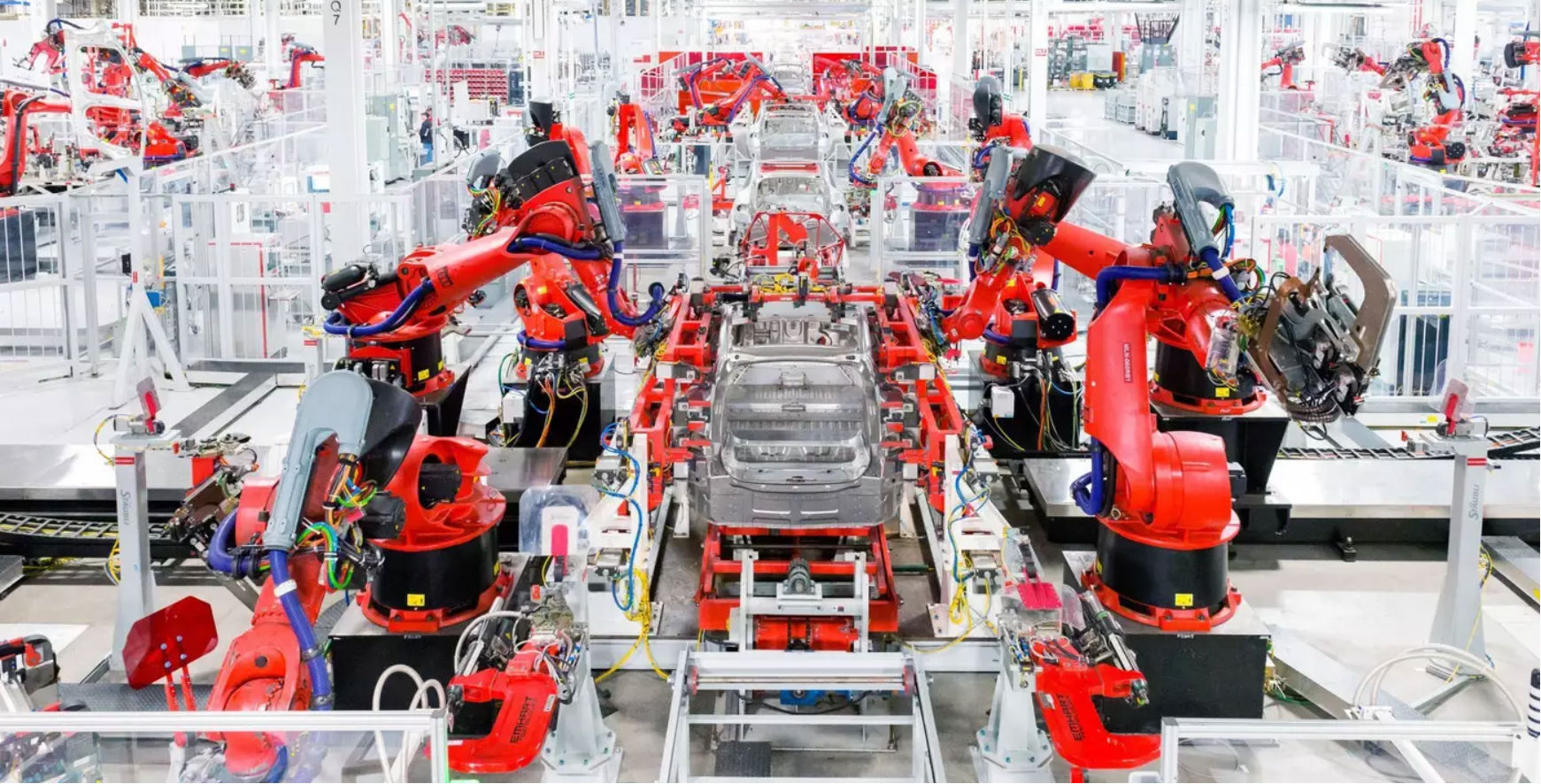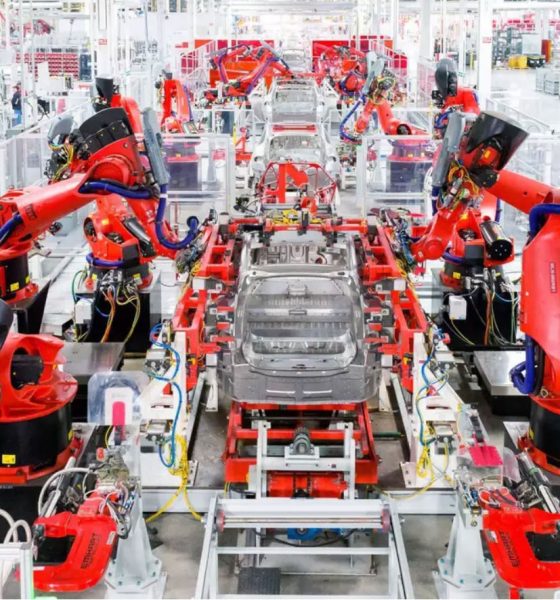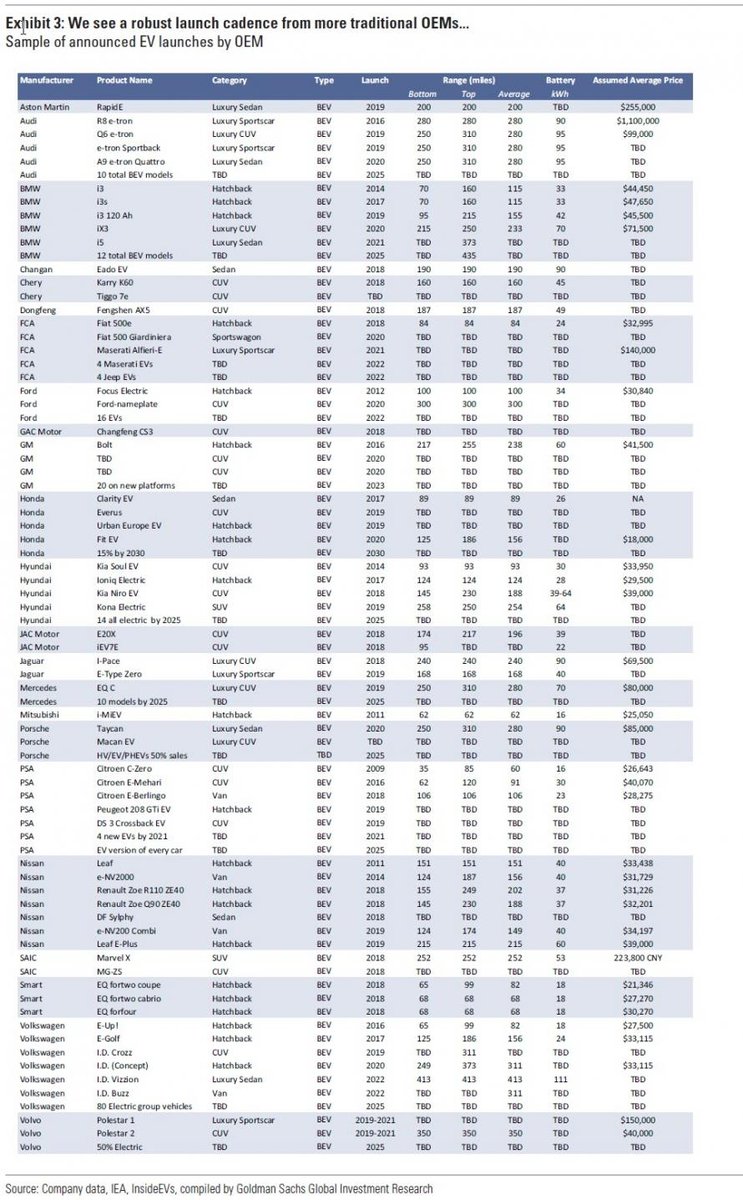

Investor's Corner
Classic Tesla bear thesis gets revived with Goldman Sachs’ latest Sell rating
Just a little over a week after Elon Musk walked away from Tesla’s privatization deal, Goldman Sachs has resumed its coverage of the company. With this renewed coverage comes a strong Sell rating, citing increasing competition from rival carmakers as a reason behind a possible decline in Tesla’s share in the EV market.
A recent note penned by Goldman Sachs analyst David Tamberrino stated that the financial firm believes Tesla stock (NASDAQ:TSLA) would drop 30% in the next 6 months due to the arrival of competing electric vehicles over the next few years. Amidst the release of Goldman Sachs’ note, Tesla shares have taken a 3% drop during Tuesday’s intraday.
“We see the medium-to-longer term industry backdrop as challenging for Tesla’s products; this follows from an increasing number of EV launches from both traditional OEMs and other start-up competitors — at a time when the company’s product cadence hits a gap. We believe the company will see pressure to its lead in EVs as competition catches up,” Tamberrino wrote.
The Goldman Sachs analyst provided a list of some of the electric car makers he believes would be a legitimate threat to Tesla, among them vehicles from BMW, Jaguar, and Porsche, as well as other legacy carmakers that have pledged to release electric cars over the next few years.
“With regional mandates and tightening CO2 standards, both traditional and new entrants are expected to launch several EVs in the coming years — with a large crescendo in the early-to-mid 2020s. Altogether, we remain bearish on the company’s ability to execute, achieve its targeted production ramp/margins, and sustain FCF [free cash flow] generation,” Tamberrino wrote.

It should be noted that the Goldman Sachs analyst has maintained a firm Sell rating on Tesla for a while now. David Tamberrino, for one, has kept his Sell rating on the company since last year, partly causing his rankings in websites such as the TipRanks to suffer. So far, Tamberrino has an average return of -9.0, ranking him as #4,553 out of 4,875 among TipRanks‘ list of Wall St. analysts.
The idea of rival car companies coming up with “Tesla Killers” has been around for a very long time, and over the years, these vehicles have taken many forms. Last year, it was the Chevy Bolt EV being hailed as the Model 3 killer. This year, it’s the Jaguar I-PACE. Next year, it will probably be the Porsche Taycan.
While it is true that these vehicles are legitimate competition for Tesla’s electric cars in terms of quality and performance, their usually limited production numbers prevent them from actually having a shot at toppling the Model S, X, and 3 from their spots at the top of the premium EV market. Chevy, for one, has not really pushed the production of the Bolt this year, Jaguar is reportedly planning to produce up to 30,000 units of the I-PACE annually, and Porsche has revealed that the initial production of the Taycan would be at 20,000 cars per year. Tesla, even at its present state where it is still refining its Model 3 production, is looking to produce around 50,000-55,000 Model 3 this Q3 2018. That’s practically the planned annual production of the Taycan and the I-PACE combined.
Besides, the idea of electric cars “killing” an electric car maker is flawed at its core. Tesla’s electric vehicles, after all, are a step towards sustainability. Thus, if other manufacturers are designing their electric cars in the same way that Tesla is, then they should not be releasing vehicles that are designed to “kill” other electric cars — they should be creating vehicles that are designed to “kill” gas and diesel-powered automobiles.
As of writing, Tesla shares are trading down 3.25% at $291.70 per share.
Disclosure: I have no ownership in shares of TSLA and have no plans to initiate any positions within 72 hours.

Investor's Corner
Tesla stock closes at all-time high on heels of Robotaxi progress

Tesla stock (NASDAQ: TSLA) closed at an all-time high on Tuesday, jumping over 3 percent during the day and finishing at $489.88.
The price beats the previous record close, which was $479.86.
Shares have had a crazy year, dipping more than 40 percent from the start of the year. The stock then started to recover once again around late April, when its price started to climb back up from the low $200 level.
This week, Tesla started to climb toward its highest levels ever, as it was revealed on Sunday that the company was testing driverless Robotaxis in Austin. The spike in value pushed the company’s valuation to $1.63 trillion.
Tesla Robotaxi goes driverless as Musk confirms Safety Monitor removal testing
It is the seventh-most valuable company on the market currently, trailing Nvidia, Apple, Alphabet (Google), Microsoft, Amazon, and Meta.
Shares closed up $14.57 today, up over 3 percent.
The stock has gone through a lot this year, as previously mentioned. Shares tumbled in Q1 due to CEO Elon Musk’s involvement with the Department of Government Efficiency (DOGE), which pulled his attention away from his companies and left a major overhang on their valuations.
However, things started to rebound halfway through the year, and as the government started to phase out the $7,500 tax credit, demand spiked as consumers tried to take advantage of it.
Q3 deliveries were the highest in company history, and Tesla responded to the loss of the tax credit with the launch of the Model 3 and Model Y Standard.
Additionally, analysts have announced high expectations this week for the company on Wall Street as Robotaxi continues to be the focus. With autonomy within Tesla’s sights, things are moving in the direction of Robotaxi being a major catalyst for growth on the Street in the coming year.
Elon Musk
Tesla needs to come through on this one Robotaxi metric, analyst says
“We think the key focus from here will be how fast Tesla can scale driverless operations (including if Tesla’s approach to software/hardware allows it to scale significantly faster than competitors, as the company has argued), and on profitability.”

Tesla needs to come through on this one Robotaxi metric, Mark Delaney of Goldman Sachs says.
Tesla is in the process of rolling out its Robotaxi platform to areas outside of Austin and the California Bay Area. It has plans to launch in five additional cities, including Houston, Dallas, Miami, Las Vegas, and Phoenix.
However, the company’s expansion is not what the focus needs to be, according to Delaney. It’s the speed of deployment.
The analyst said:
“We think the key focus from here will be how fast Tesla can scale driverless operations (including if Tesla’s approach to software/hardware allows it to scale significantly faster than competitors, as the company has argued), and on profitability.”
Profitability will come as the Robotaxi fleet expands. Making that money will be dependent on when Tesla can initiate rides in more areas, giving more customers access to the program.
There are some additional things that the company needs to make happen ahead of the major Robotaxi expansion, one of those things is launching driverless rides in Austin, the first city in which it launched the program.
This week, Tesla started testing driverless Robotaxi rides in Austin, as two different Model Y units were spotted with no occupants, a huge step in the company’s plans for the ride-sharing platform.
Tesla Robotaxi goes driverless as Musk confirms Safety Monitor removal testing
CEO Elon Musk has been hoping to remove Safety Monitors from Robotaxis in Austin for several months, first mentioning the plan to have them out by the end of 2025 in September. He confirmed on Sunday that Tesla had officially removed vehicle occupants and started testing truly unsupervised rides.
Although Safety Monitors in Austin have been sitting in the passenger’s seat, they have still had the ability to override things in case of an emergency. After all, the ultimate goal was safety and avoiding any accidents or injuries.
Goldman Sachs reiterated its ‘Neutral’ rating and its $400 price target. Delaney said, “Tesla is making progress with its autonomous technology,” and recent developments make it evident that this is true.
Investor's Corner
Tesla gets bold Robotaxi prediction from Wall Street firm
Last week, Andrew Percoco took over Tesla analysis for Morgan Stanley from Adam Jonas, who covered the stock for years. Percoco seems to be less optimistic and bullish on Tesla shares, while still being fair and balanced in his analysis.

Tesla (NASDAQ: TSLA) received a bold Robotaxi prediction from Morgan Stanley, which anticipates a dramatic increase in the size of the company’s autonomous ride-hailing suite in the coming years.
Last week, Andrew Percoco took over Tesla analysis for Morgan Stanley from Adam Jonas, who covered the stock for years. Percoco seems to be less optimistic and bullish on Tesla shares, while still being fair and balanced in his analysis.
Percoco dug into the Robotaxi fleet and its expansion in the coming years in his latest note, released on Tuesday. The firm expects Tesla to increase the Robotaxi fleet size to 1,000 vehicles in 2026. However, that’s small-scale compared to what they expect from Tesla in a decade.
Tesla expands Robotaxi app access once again, this time on a global scale
By 2035, Morgan Stanley believes there will be one million Robotaxis on the road across multiple cities, a major jump and a considerable fleet size. We assume this means the fleet of vehicles Tesla will operate internally, and not including passenger-owned vehicles that could be added through software updates.
He also listed three specific catalysts that investors should pay attention to, as these will represent the company being on track to achieve its Robotaxi dreams:
- Opening Robotaxi to the public without a Safety Monitor. Timing is unclear, but it appears that Tesla is getting closer by the day.
- Improvement in safety metrics without the Safety Monitor. Tesla’s ability to improve its safety metrics as it scales miles driven without the Safety Monitor is imperative as it looks to scale in new states and cities in 2026.
- Cybercab start of production, targeted for April 2026. Tesla’s Cybercab is a purpose-built vehicle (no steering wheel or pedals, only two seats) that is expected to be produced through its state-of-the-art unboxed manufacturing process, offering further cost reductions and thus accelerating adoption over time.
Robotaxi stands to be one of Tesla’s most significant revenue contributors, especially as the company plans to continue expanding its ride-hailing service across the world in the coming years.
Its current deployment strategy is controlled and conservative to avoid any drastic and potentially program-ruining incidents.
So far, the program, which is active in Austin and the California Bay Area, has been widely successful.








